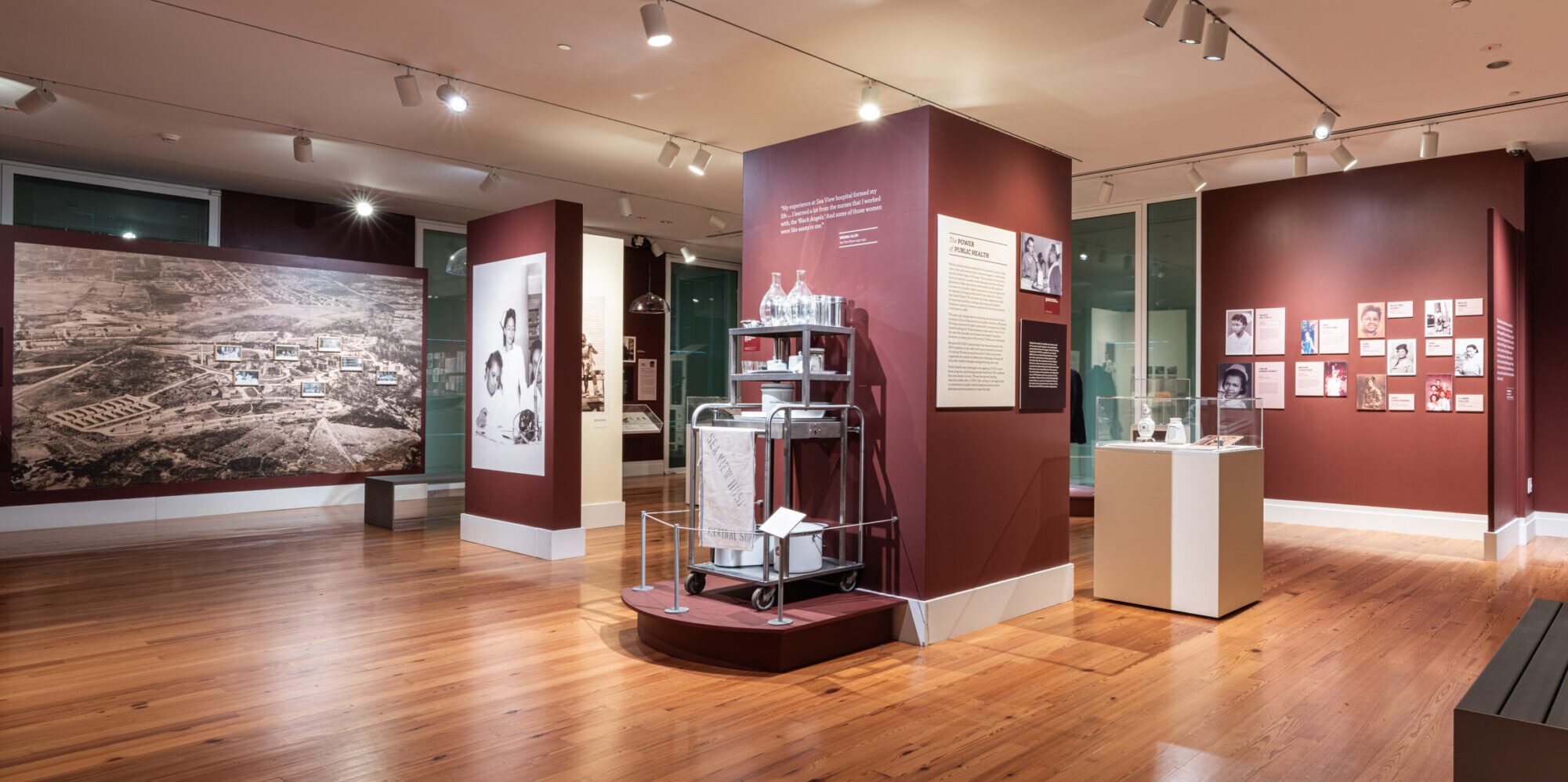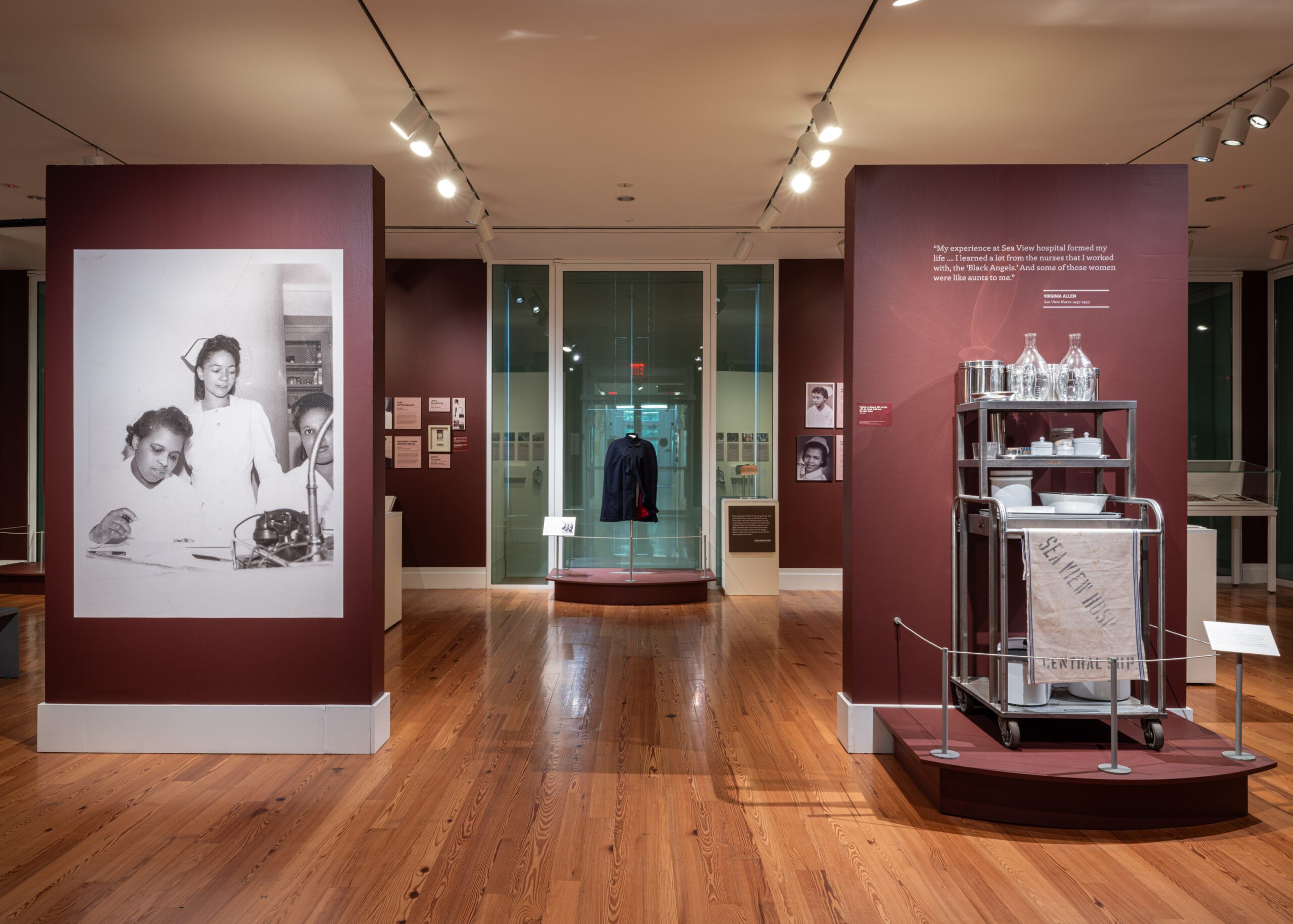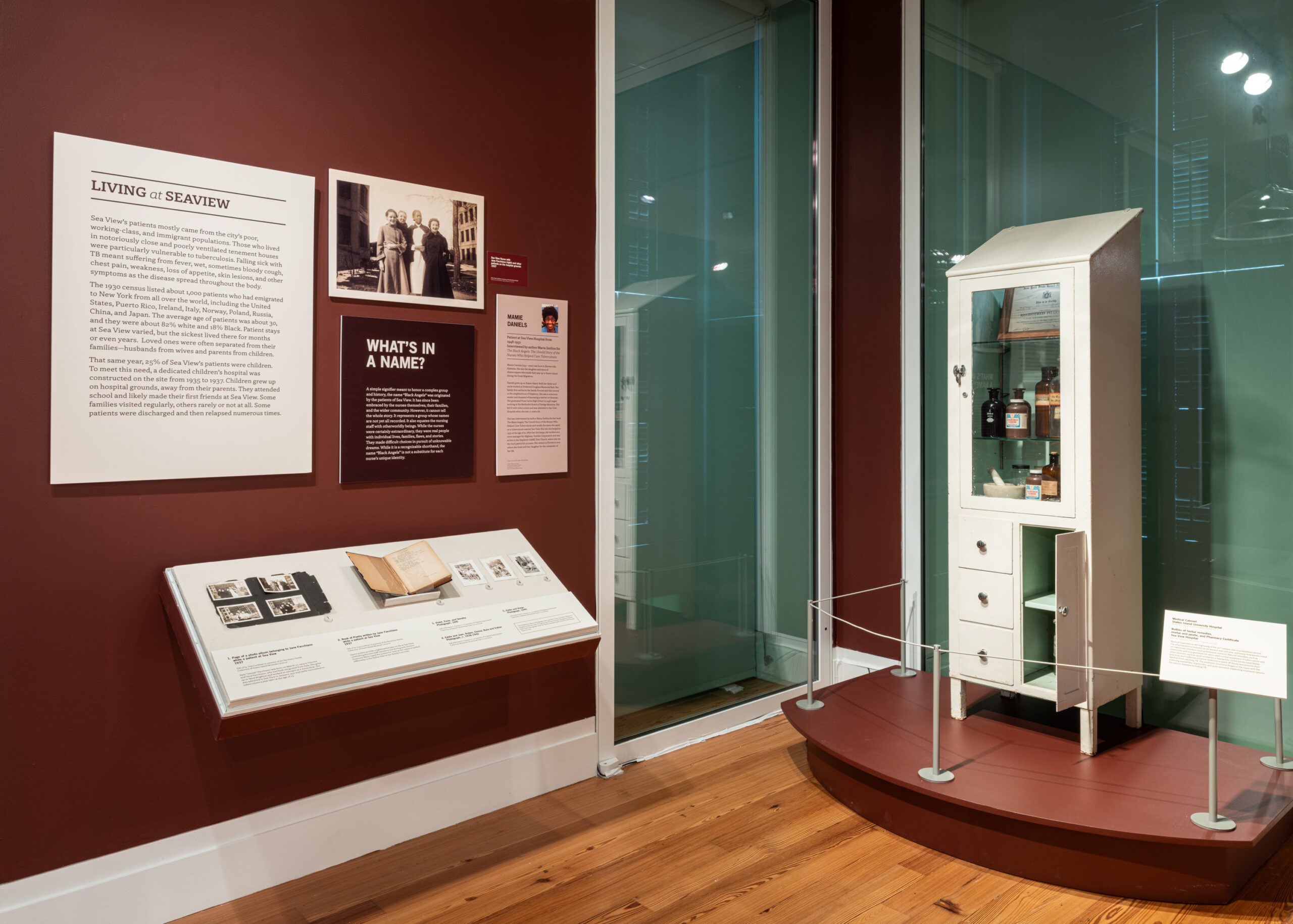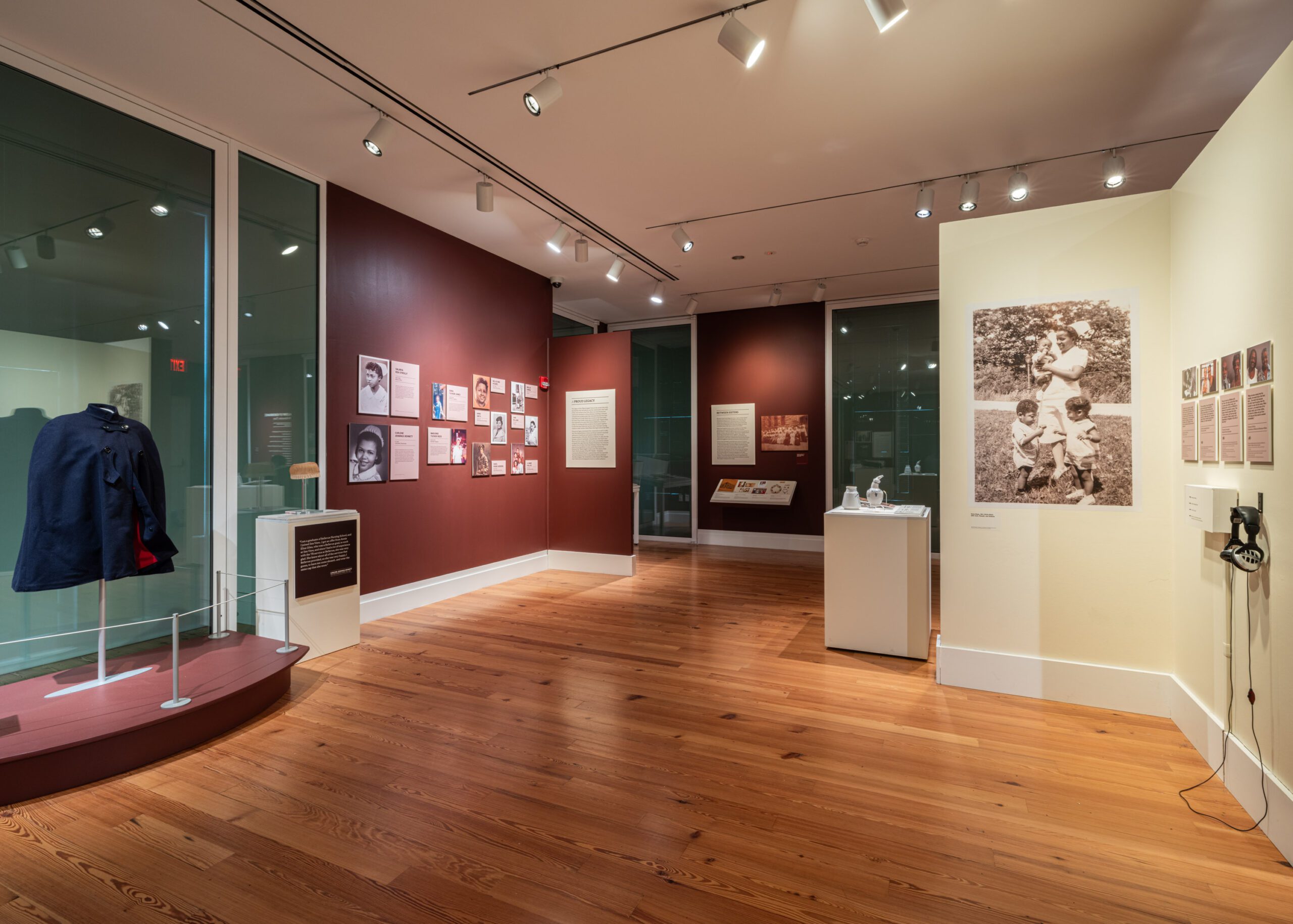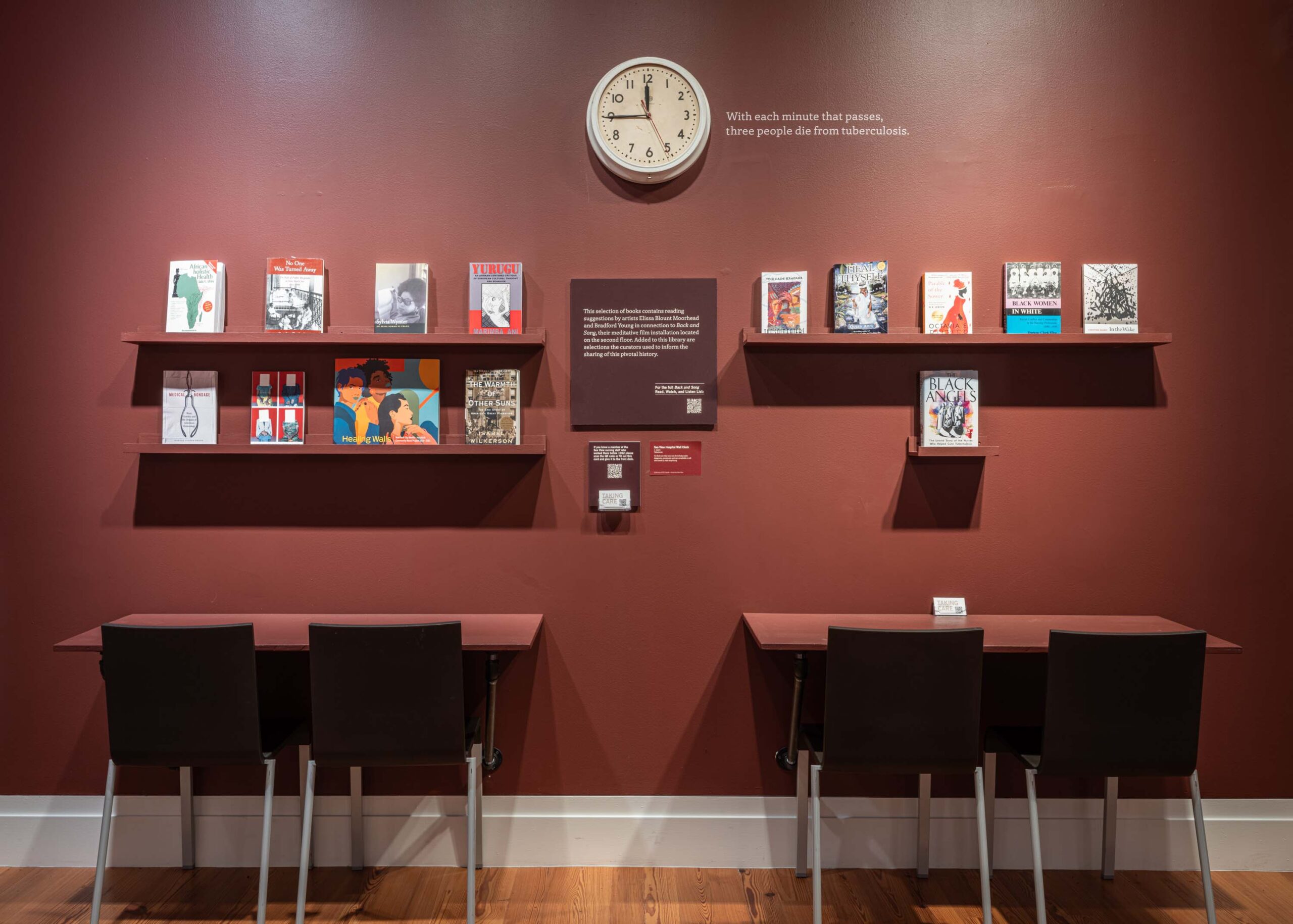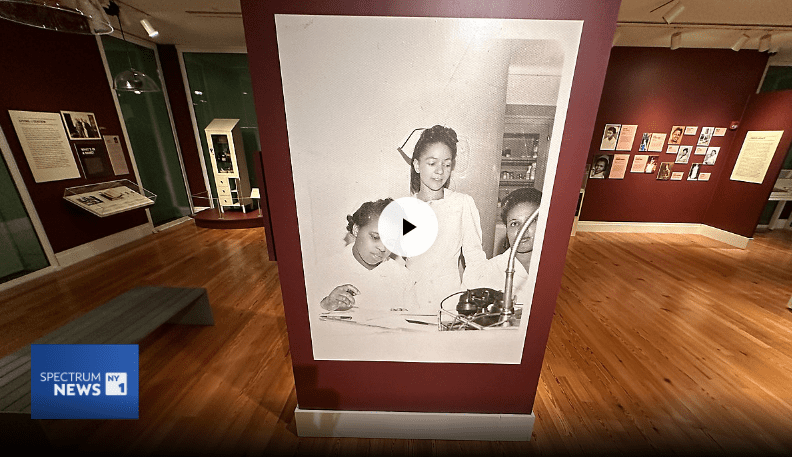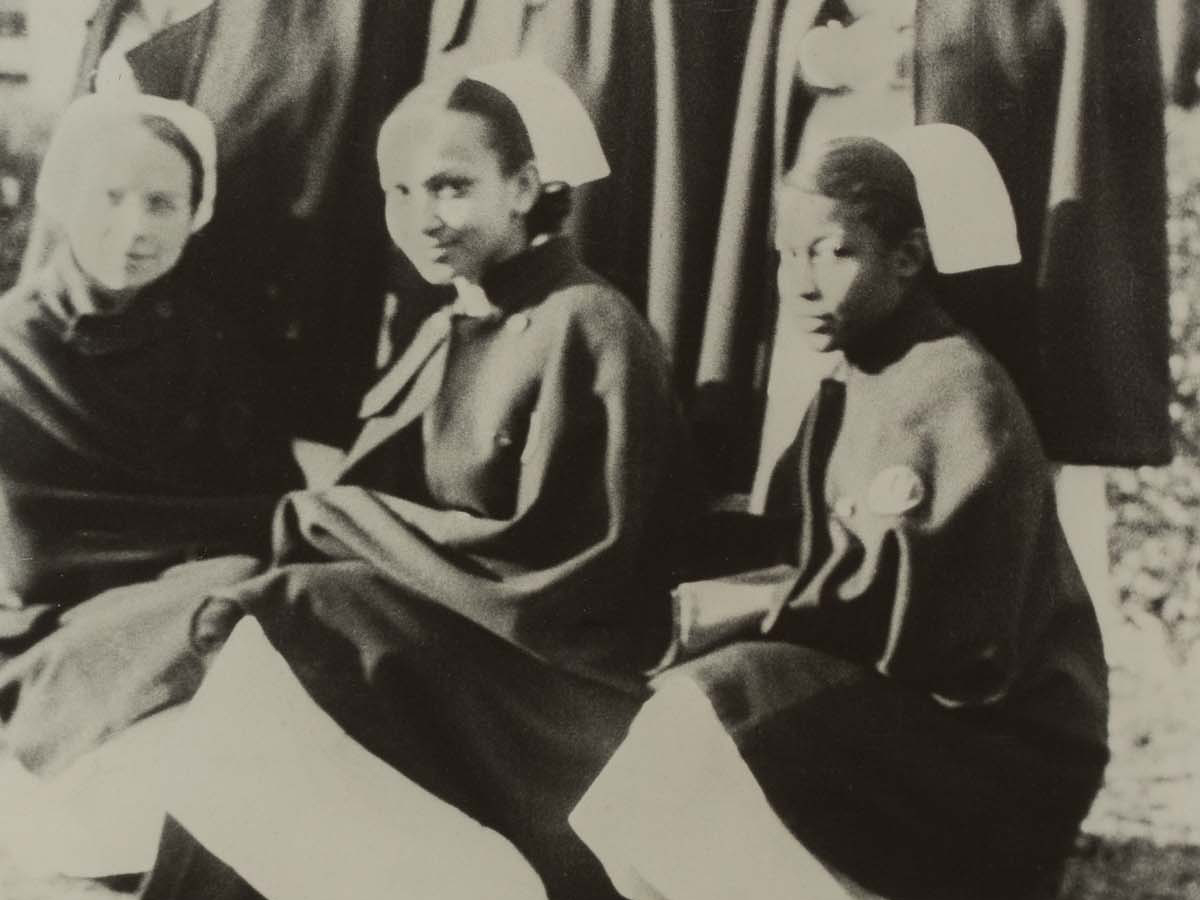Taking Care
The Black Angels of Sea View Hospital
On view January - December 2024
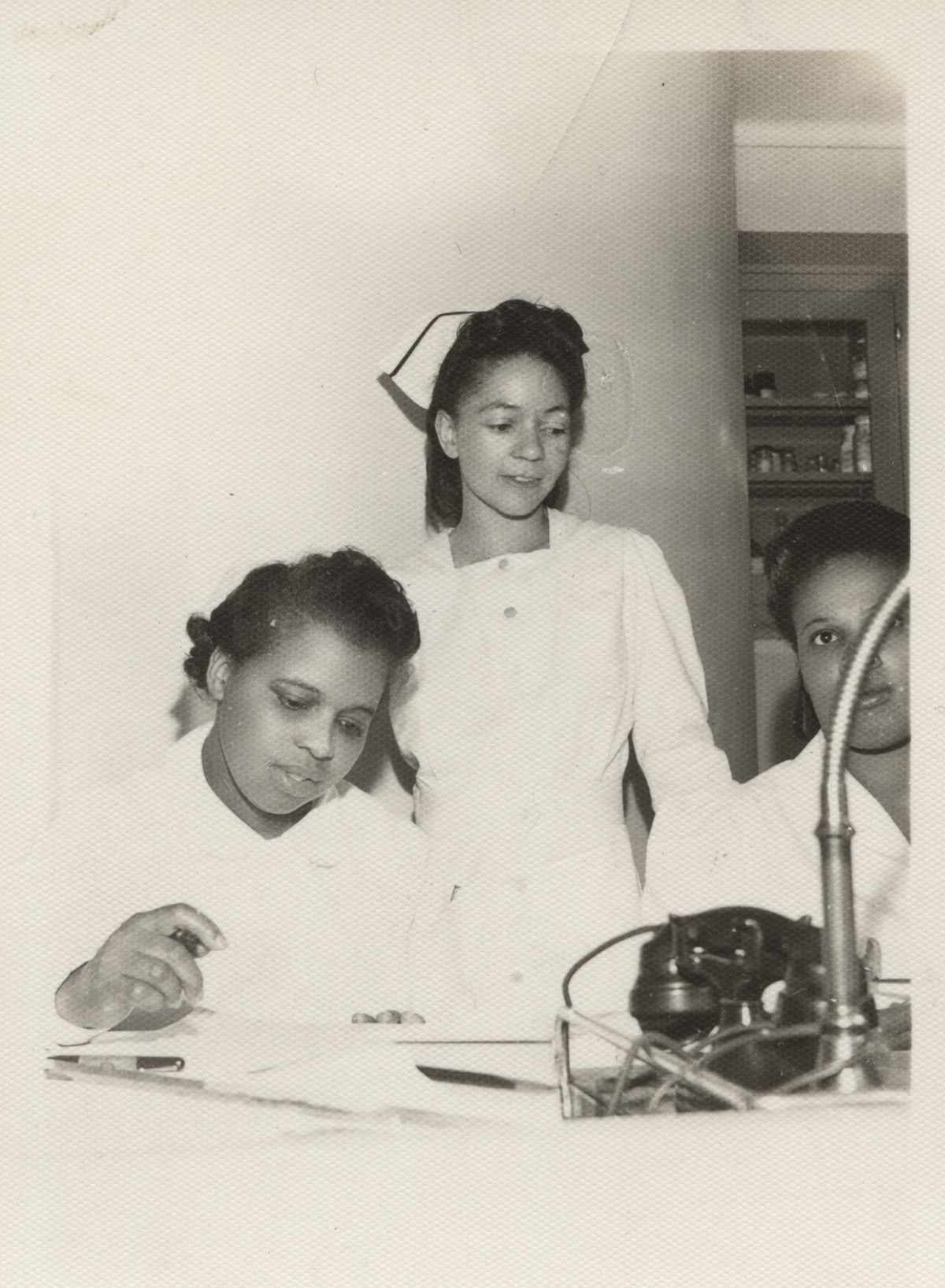
1938 - 1942 Gift of Richard T. Greene, Jr., in memory of Virginia (Lea) Greene Collection of Historic Richmond Town | 21.012.0001
Introduction
In 1951, Staten Island made history when a breakthrough treatment for tuberculosis was tested at Sea View Hospital. Taking Care highlights the groundbreaking work, lives, and legacy of the Black nursing staff, who came to be known as the “Black Angels.” This group of nurses broke racial barriers and risked their lives to care for patients and administer the clinical trials that forever changed the trajectory of this horrific disease.
Tuberculosis (TB) has caused more deaths in history than any other infectious disease. TB wards were dangerous places to work. The nurses at Sea View spent decades caring for patients sick with a contagious and incurable disease. In 1951, they were integral to drug trials that ushered in a new era of treatment for TB. In addition to their pioneering work, they created professional, religious, and activist organizations throughout the region.
Presented concurrently is Back and Song, a meditative film installation by artists Elissa Blount Moorhead and Bradford Young. Back and Song considers the labor and care provided by generations of Black healers–doctors, nurses, midwives, morticians, therapists, and health aides–and their histories of contribution to, and resistance against, Western medicine’s flawed and discriminatory structures.
Seventy-two years after the clinical trials at Sea View, tuberculosis remains a global public health crisis. Three years from the beginning of the COVID-19 pandemic, racial disparities in healthcare persist. The work of the “Black Angels” marked a turning point in the history of TB. Taking Care commemorates this medical milestone. We honor the legacy of the Sea View nursing staff and aspire to a future that continues and completes their work.
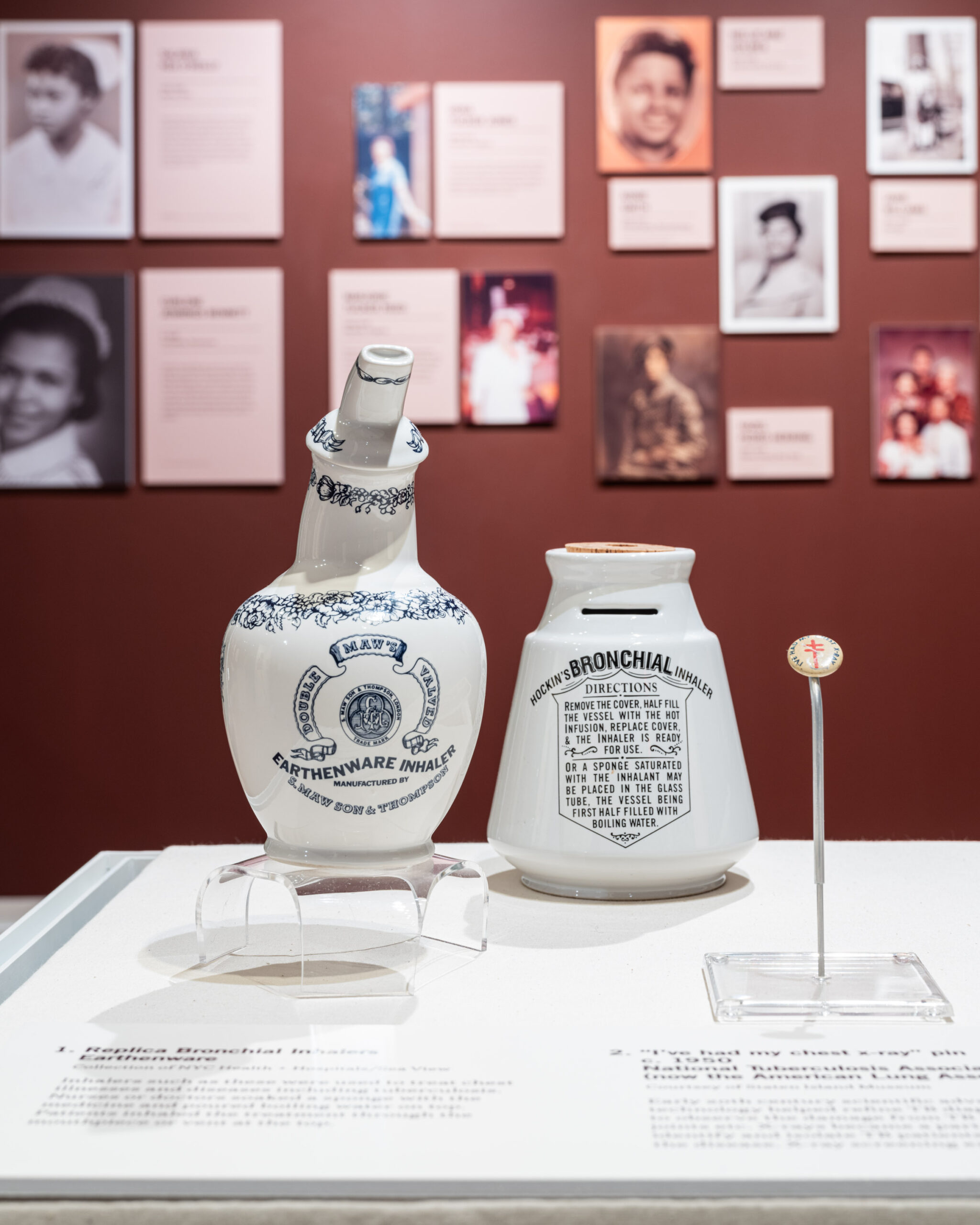
Photography by Kris Graves
Curated by
Rylee Eterginoso and Gabriella Leone
Scholar Advisory Panel
Debbie-Ann Paige
Public Historian, Professional Genealogist, and Doctoral student, College of Staten Island, CUNY
Maria Smilios
Author of The Black Angels: The Untold Story of the Nurses who Helped Cure Tuberculosis
Dr. Rita Reynolds
Associate Professor/Chair, History Department, Wagner College
Lisa Holland
Interim Library Director, Wagner College
Cynthia A. Connolly, RN, PhD
Professor of Nursing and Associate Director of the Barbara Bates Center for the Study of the History of Nursing at the University of Pennsylvania
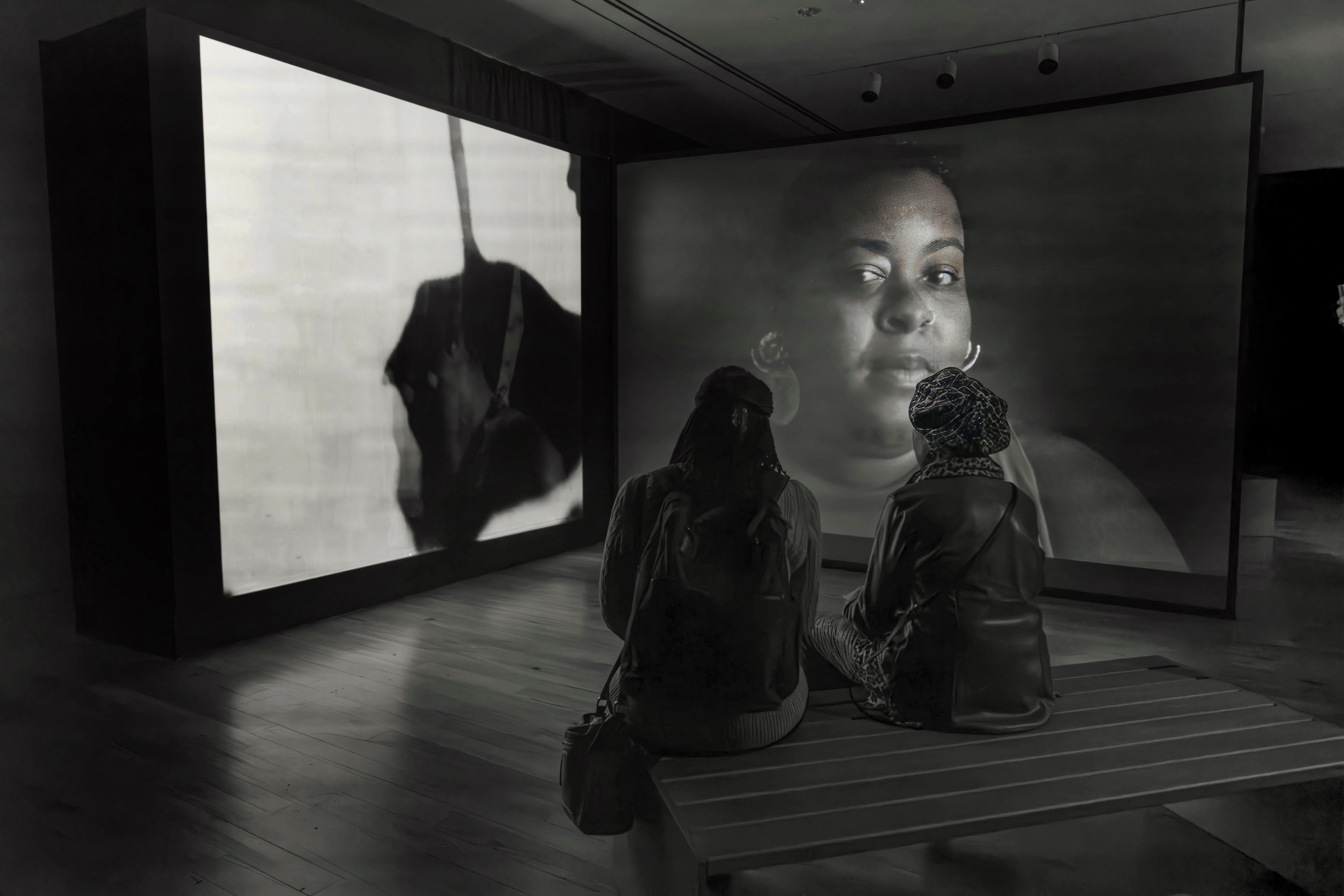
Back and Song installation at the Staten Island Museum. January, 2024. Christine Cruz Photography.
About the Artists
Elissa Blount Moorhead is an artist, mother, and visual storyteller exploring the poetics of Black quotidian life. She has created public art, books, exhibitions, and images for the last 25 years. She creates films and time-based installations, such as Back and Song, As of A Now, and Jay Z’s 4:44 video. Elissa has been recognized with the Sundance Institute | Comedy Central Comedy Fellowship, Saul Zaentz Innovation Fellowship, US Artists Fellowship, Creative Capital Award, and is currently developing a project in the Sundance Episodic Lab.
Artist, director and Academy Award-nominated cinematographer Bradford Young is known for his artful, poetic and humanistic visual style, as showcased in his cinematography for film and television including Ava DuVernay’s Selma and When They See Us, Ron Howard’s Solo: A Star Wars Story and Denis Villeneuve’s Arrival, for which he was nominated for an Oscar for Best Cinematography in 2017— the first African American to be nominated in that category.
Taking Care is made possible by:
Presenting Sponsor Staten Island University Hospital

 |
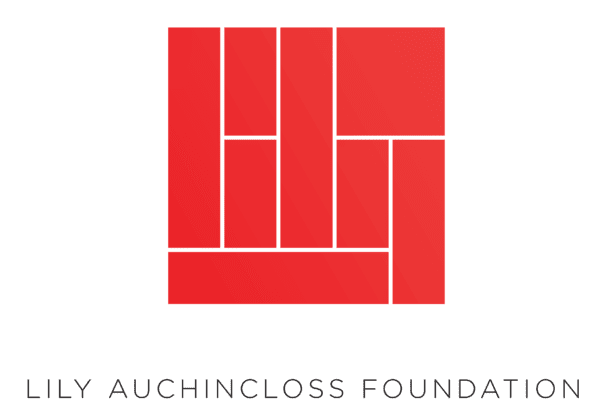 |
 |
Lead sponsorship provided by JPMorgan Chase & Co.
Major support provided by The Andy Warhol Foundation for the Visual Arts, the Laurie M. Tisch Illumination Fund and by the Lily Auchincloss Foundation.
Healthcare Heroes
Theresa Herring
Richmond University Medical Center
New York State Nurses Association
Dr. Kerry J. Kelly
Drs. Michael & Ginny Mantello
Wagner College Evelyn L. Spiro School of Nursing
Honor a Healthcare Hero
Honor a healthcare hero by supporting Taking Care at the Staten Island Museum.
Taking Care Artists and Scholar's Panel
On February 15, 2024, the Staten Island Museum hosted a panel discussion moderated by Taking Care co-curator Rylee Eterginoso which brought together artists Elissa Blount Moorhead and Bradford Young, co-curator Gabriella Leone, scholar advisors Debbie-Ann Paige, Dr. Rita Reynolds, and Lisa Holland for a discussion around their research and participation in the exhibition Taking Care: The Black Angels of Sea View Hospital. Moderated by Rylee Eterginoso and filmed by Shani Mitchell.
